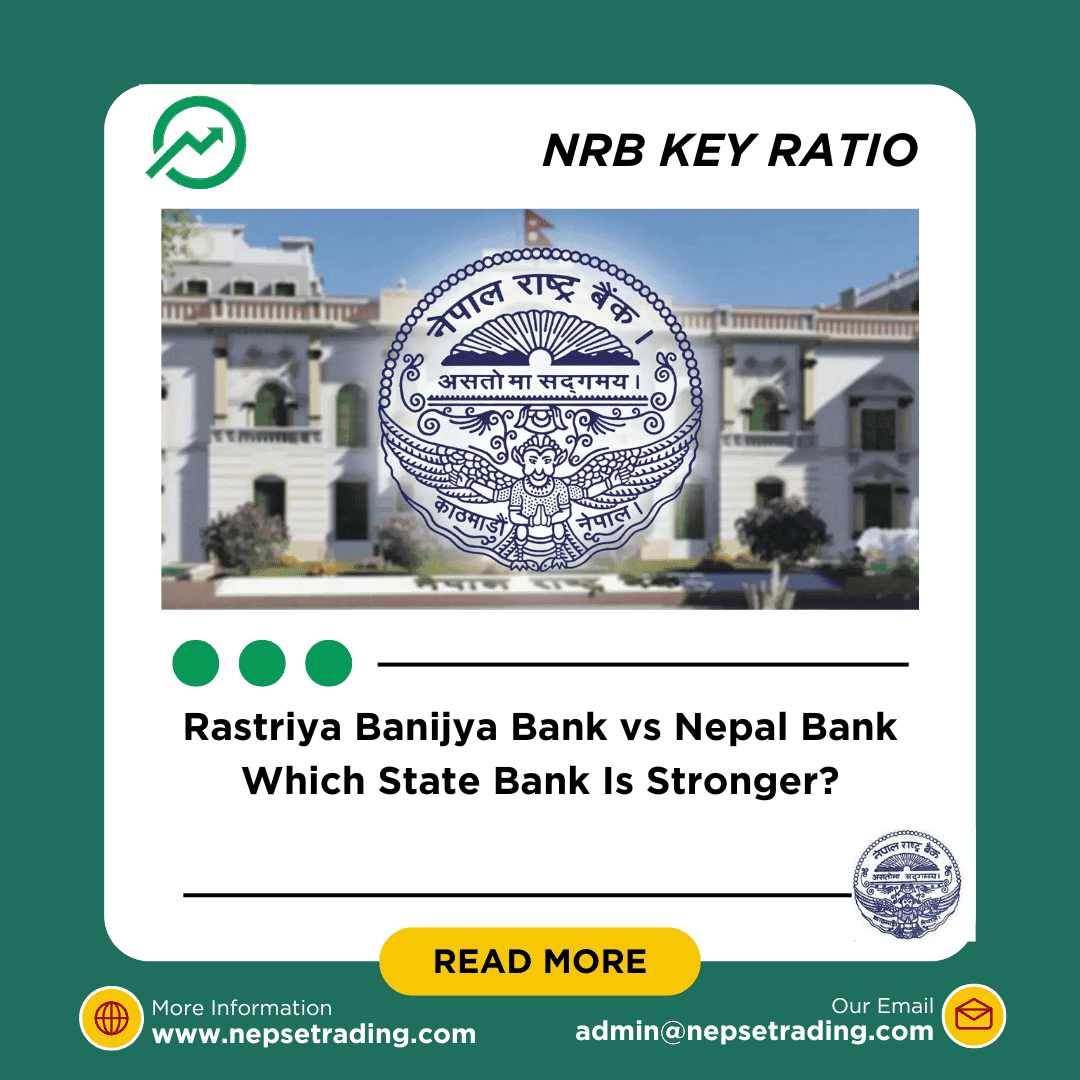By Sandeep Chaudhary
Rastriya Banijya Bank vs Nepal Bank Which State Bank Is Stronger?

Nepal’s two leading state-owned commercial banks, Rastriya Banijya Bank (RBB) and Nepal Bank Limited (NBL), present a mixed picture of strength when analyzed through the latest NRB data of Asadh 2082 (Mid-July 2025). On the capital front, NBL emerges stronger with a Capital Adequacy Ratio (CAR) of 13.06% and Core Capital Ratio (CCAR) of 10.05%, compared to RBB’s 11.84% CAR and 9.46% CCAR. This indicates that NBL is better positioned in terms of solvency and capital buffer, offering more resilience against financial shocks. However, when it comes to size and deposit strength, RBB takes the lead with a massive deposit base of Rs. 502,791 million and loans of Rs. 308,904 million, compared to NBL’s Rs. 336,875 million in deposits and Rs. 236,158 million in loans.
In terms of liquidity, RBB again outperforms, maintaining a net liquidity ratio of 44.24% and an SLR of 40.33%, both higher than NBL’s 38.33% liquidity and 35.40% SLR. This shows that RBB has a stronger short-term cushion to meet obligations. However, NBL’s Credit-to-Deposit (CD) ratio of 71.10% indicates more active loan mobilization compared to RBB’s conservative 62.27%, suggesting that NBL is slightly more efficient in deploying its deposit resources. When looking at asset quality, both banks face challenges, with relatively high NPL ratios—NBL at 5.58% and RBB at 4.78%. Yet, after provisioning, the net NPLs remain below 1% for both, indicating strong risk management practices despite their large portfolios.
On sectoral lending compliance, NBL is more aligned with NRB mandates, with 12.26% in agriculture and 17.59% in MCSME lending, compared to RBB’s 12.01% in agriculture and 15.69% in MCSME. RBB, however, leads in energy lending at 8.77%, surpassing the 6.5% regulatory requirement. Overall, the comparison shows that RBB dominates in size, liquidity, and stability, while NBL demonstrates stronger capital resilience and policy compliance, making both crucial but complementary players in Nepal’s banking system.









